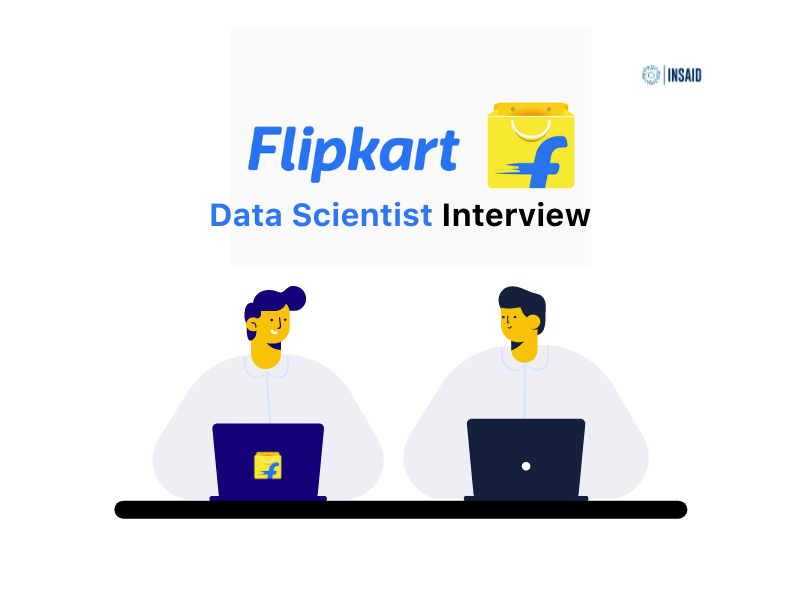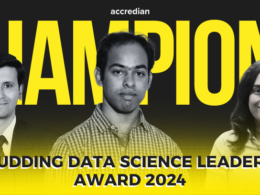Flipkart is a prominent e-commerce website which has achieved the status of the largest online marketplace in India. As per Flipkart, the ‘Data Science team is on a mission to build systemic intelligence across Flipkart products and overarching ecosystem’.
Huge chunks of rich data are collected on a daily basis which is a great mixture of numerical, structured, unstructured, image- and audio-based statistics, all set to redefine the shopping trends for Flipkart in the coming future.
What does a Data Scientist at Flipkart do?

Data Scientists at Flipkart have adopted special techniques that range from classification, regression, clustering, matrix factorization, graphical model, tree-based models, network and graph algorithms, topic modelling, image processing, deep learning and NLP. These are applied on large datasets for even larger initiatives.
What is the Data Scientist interview process at Flipkart?
The interview process is divided into 2 phases which are:
Phase 1 Pre-Onsite interview
- Recruiter Discussion
- Technical Phone Screening
Phase 2- Onsite interview
- Presentation
- Hands on skill
- In-depth discussion on Data Science and Mathematical Modelling
- Team and Culture fit interview.
Data Scientist interview phases at Flipkart
Phase-1 Pre-Onsite interview
This round focuses on a phone interview with the shortlisted candidate. The candidate will receive the call from a recruiter or a hiring manager from Flipkart. You will be subjected to questions related to your resume and will be asked about your past experiences, projects and expectations from the job role.
You will also be walked through the job description and be told what the company expectations are, if this position is filled. The hiring process will also be explained in detail.
Pro Tip: Make sure to ask as many questions as possible, so that you get a clear understanding of the role you are applying for, scope and the kind of work involved. Make the conversation as constructive and open as possible.
Next you will be on a call with a potential colleague who will ask you technical questions and try to understand your level of knowledge. This being a technical round, is focused on past work experience, role-eligibility and a few problem-solving questions relevant to the role you’re being interviewed for.
You may have to dive deep with the interviewer to explain one of the projects you have executed in the past. You will be evaluated on your strengths and weaknesses.
Pro Tip: Be sure to brush up on your knowledge of SQL and Python skills. These will surely help you. Make sure to refer to your resume as well.
Phase 2- Onsite interview
The onsite interview begins with a presentation round, where the interviewer gives you the choice of presenting any project that you have been a part of in the past. This round is for eligible candidates who have done significant work or have research experience.
This is crucial since it sets the stage for the rest of the technical discussion that you will have at this interview round. You will be expected to provide the title and abstract of your presentation in advance. This will be an interactive session, so be prepared accordingly.
This round typically takes 45 minutes for the presentation and 15 minutes for the Q&A.
Pro Tip: Be confident and talk about projects that you have worked on in the past and the role you have played there. Make sure to mention every detail possible.
Next, you will be provided with a dataset and an accompanying problem statement. You will be evaluated on your ability to understand and solve the problem by understanding
the data and modelling the solution in the best possible manner. In the end you will be expected to submit the code. This round will take approximately 120 minutes.
The next round is an in-depth discussion on Data Science and Mathematical Modelling. The agenda of this round is to understand your thought process by having an in-depth discussion on your approach to solving a real-world problem.
You are expected to ask the apt questions and drive the required formalism in modelling, while also defining the right evaluation and experimentation setup to address the various business problems.
Your understanding of the technical domain and your ability to formally present any modifications that may arise during the discussion will also be taken into account. This round will take around 60 minutes.
The final round will be an interview about the Team and Culture fit. You will be asked questions based on your aspirations, motivations, strengths and weaknesses, etc. You will be judged self-awareness, leadership ability, stakeholder management and how good of a fit you are at Flipkart’s culture.
Pro Tip: Make sure to read up on Flipkart’s culture values. Be confident and think well before you answer any of the questions put up by the recruiter.
 Pin
Pin20 Questions that will help you prepare for the interview at Flipkart:
The candidate is expected to be familiar with general machine learning principles such as bias-variance tradeoff, error analysis, cross-validation, train/test protocols, evaluation metrics and process. Here are some examples of them:
EASY
- What is Natural Language Processing?
- Why is natural language processing important?
- How to create a good decision tree?
- What is the importance of the decision tree method?
- What is a decision tree method?
- What are some of the important tools used in Big Data analytics?
- What is Big Data?
- How will you recover the information from a given data set? What are the most common issues in the process of information retrieval?
- How to deal with unbalanced data?
- Have you contributed to any open source project?
INTERMEDIATE
- What is Root Cause Analysis?
- Explain the purpose of group functions in SQL. Cite certain examples of group functions.
- What is a Gaussian distribution and how is it used in data science?
- What is the main difference between overfitting and underfitting?
- What is the goal of A/B Testing?
- What are the limitations of a Linear Model/Regression?
- What is Collaborative filtering?
- What is an API? What are APIs used for?
HARD
- How would you select a representative sample of search queries from five million?
- What is the difference between the Breadth First Search (BFS) and Depth First Search (DFS)?
This guide will surely help you guide your way through the interview process at Flipkart. To read more of such blogs click here.






